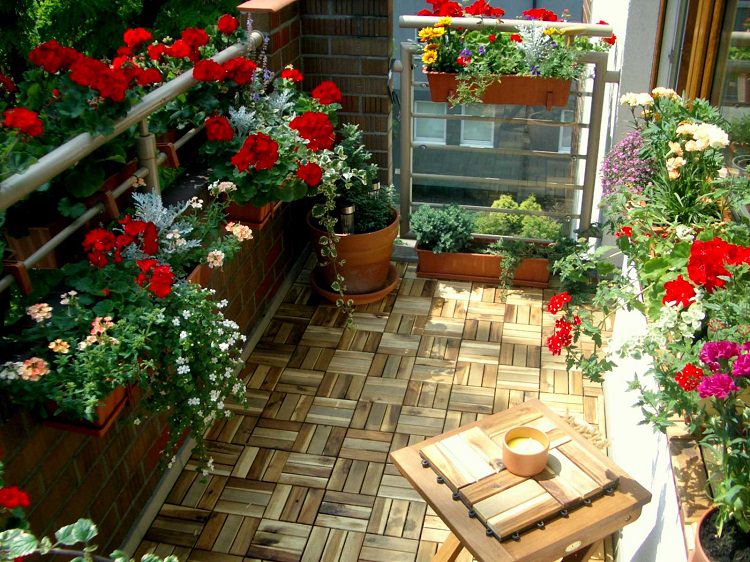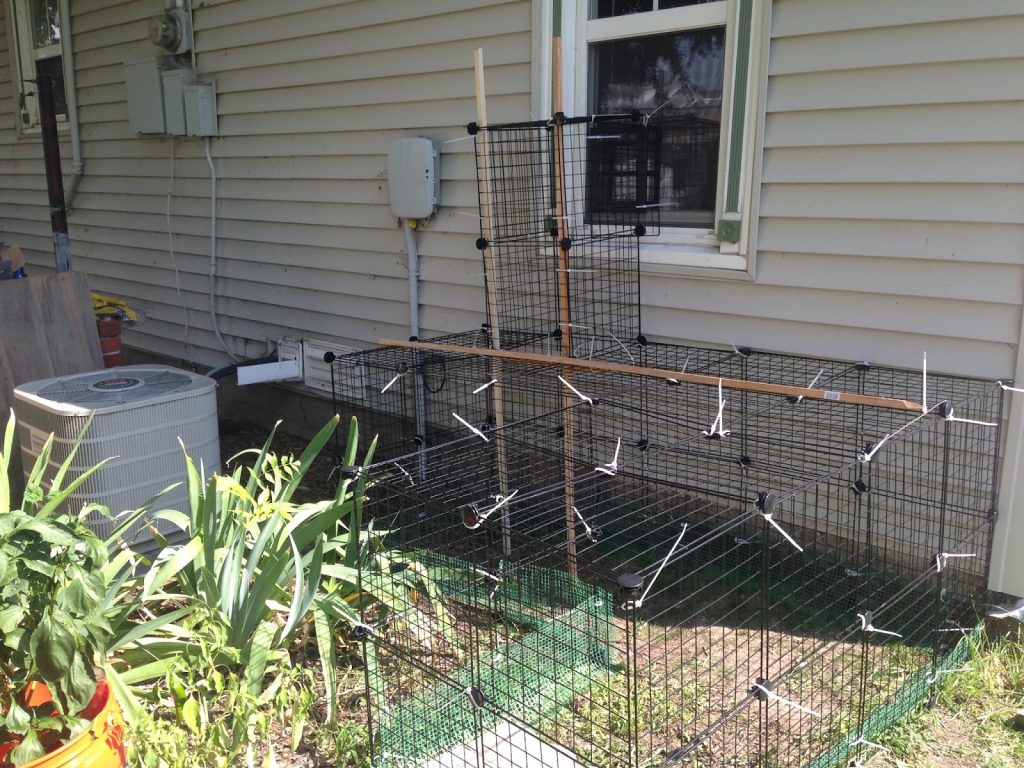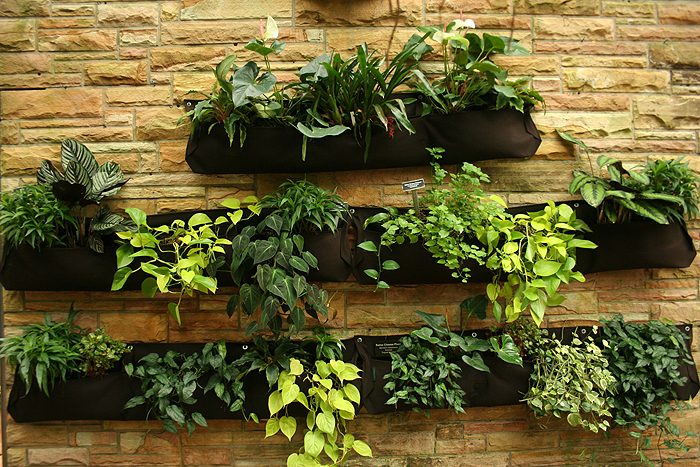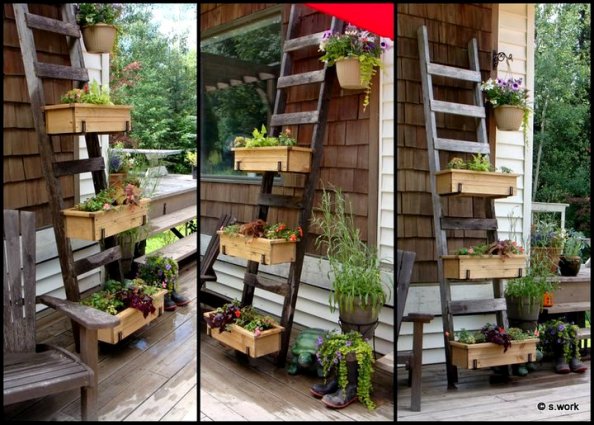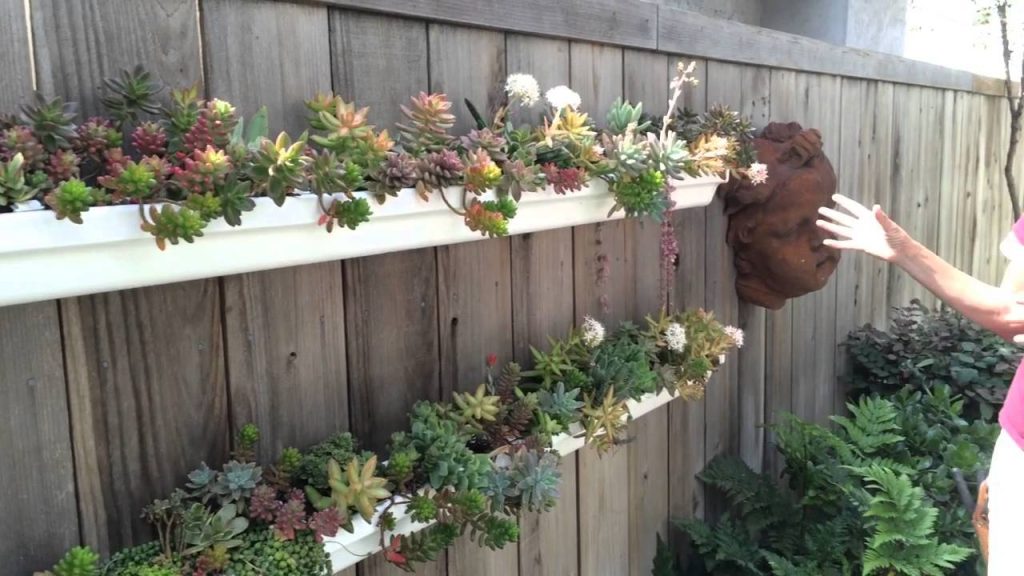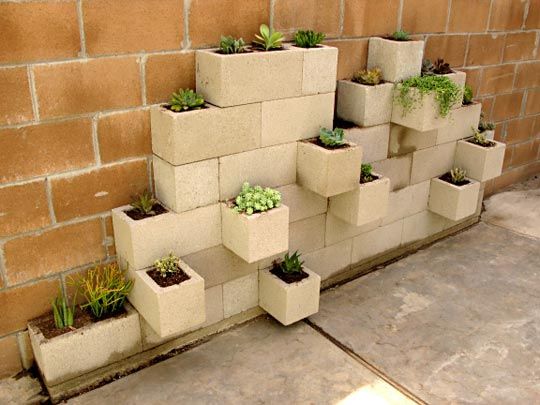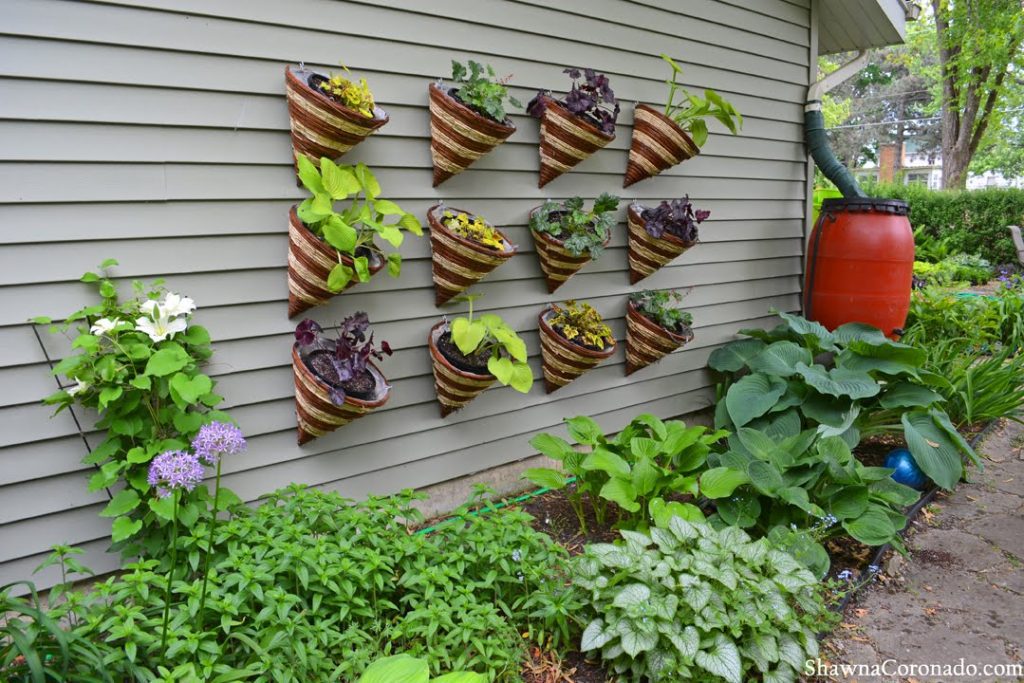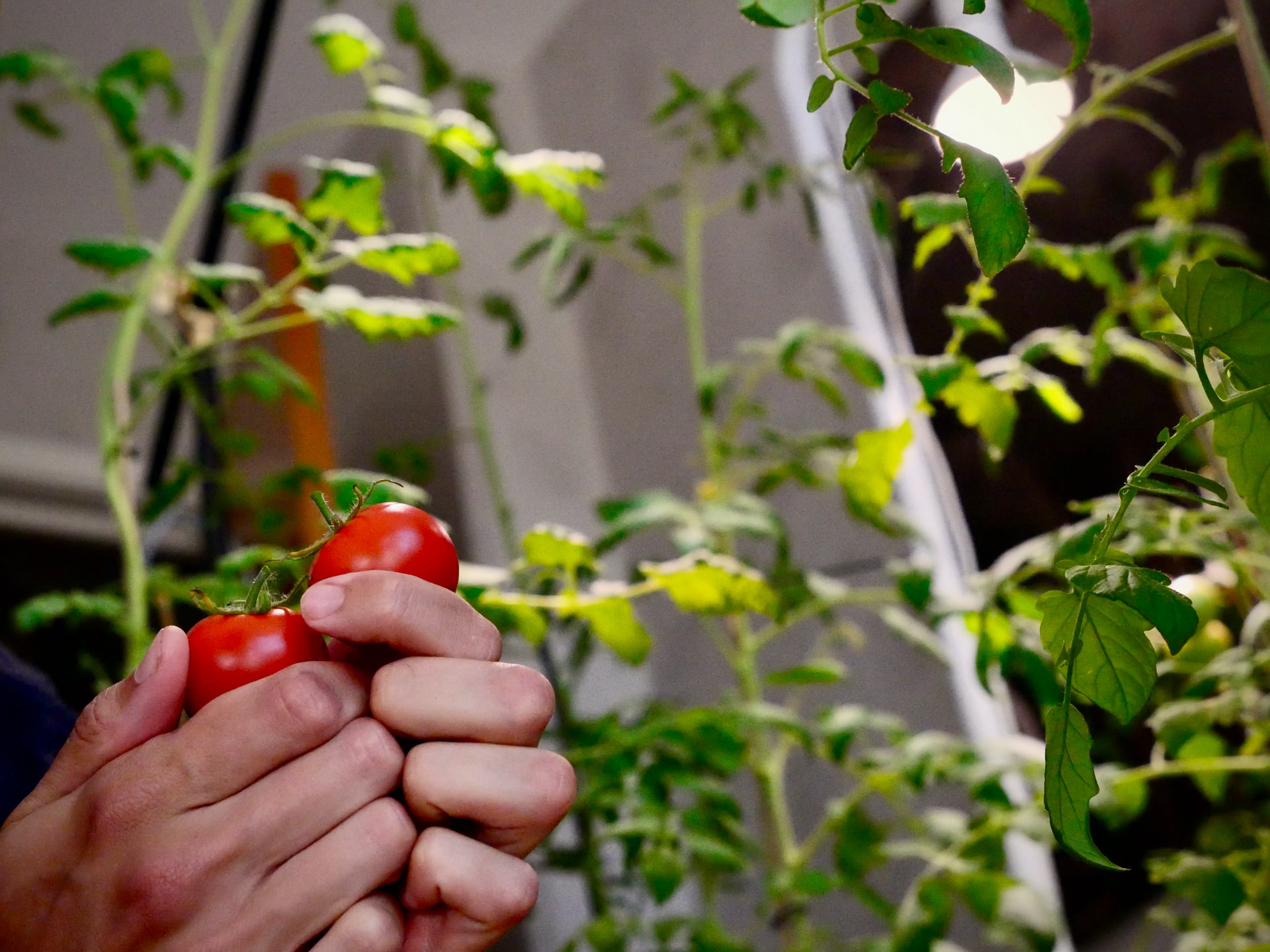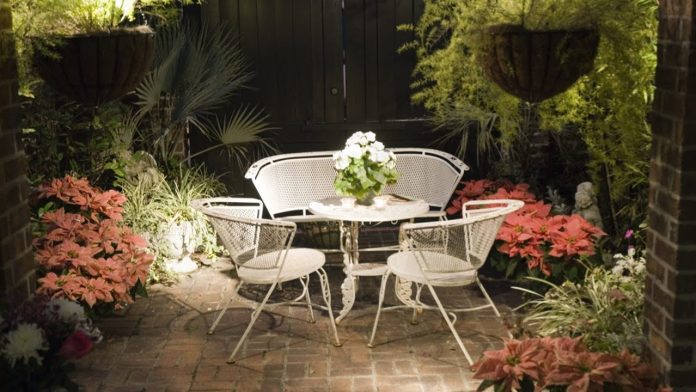
There’s no need to envy those with big backyard gardens. All you need is a little creativity to start your own vertical patio garden. You don’t have to settle for just a few potted plants in the corners, either. You’ll have plenty of room for flowers or vegetables once you learn how to optimize all three dimensions of the space you have.
Vertical gardening means using walls and fences to grow your favorite decorative or edible plants. You can also hang planters in multiple tiers, where they’ll catch the sun and provide shade on your patio. Racks and shelving add layers for plantings where no walls or fences exist. You’ll find yourself pleasantly surprised with all the options available once you start thinking about using height when planning your patio garden.
Starting a Patio Garden?
Whether you have a small balcony, a patio slab, or even a front porch, you can grow a variety of flowers, herbs, or vegetable plants. The only limits will be the amount of sunlight your space gets throughout the day and the length of your growing season
Light requirements
Most edible plants, like vegetables and plants, require at least six hours of sunlight every day. Those with covered patios and porches may find it doesn’t receive enough sunlight during the day to grow tomatoes or strawberries. This is where vertical gardening comes in. Hanging pots or trellises will allow you to place more of your vegetable plants vertically, where they will receive more hours of sunlight. Hanging them in tiers on the south-facing side of your patio or overhang will provide them with enough light to produce a good harvest.
If your patio or balcony has no overhang or roof, you can check the sunlight exposure throughout the day to see which areas get the most light. That way, you can place your vegetables and fruits in the sunniest spots, and reserve the darkest corners for shade-tolerant flowers and ferns. Shady spots make ideal growing conditions for many tropical plants that normally grow under rainforest canopies. And they lend a resort air to your outdoor entertaining space.
Growing zones
Before planning your patio garden, check the U.S. Department of Agriculture (USDA) site to find your hardiness zone. This information will help you understand the best time to start your garden in the spring. Once you know the zone number where you live, you’ll be able to choose plants and seeds for your patio garden.
Nearly all commercially sold seeds provide instructions according to the USDA hardiness zone map. For example, you may purchase a packet of morning glory seeds that says you should plant them in April if you live in Zone 5. Planting outdoors earlier than that may mean your seeds will not sprout until much later, and you’ll risk damaging the seeds while they wait for the soil to become warm enough.
Choosing Plants for Your Patio Garden
Once you know how much sunlight your patio gets and your hardiness zone, remember to take into account that for the most part, you’ll be growing your plants in containers. Although you can better control the quality of the soil and amount of water they receive, you may have to make adjustments if your patio doesn’t get much sunlight.
Another thing to think about is what you’ll do with your plants during the cold winter months. One upside to container gardening is that you can move your plants indoors easily when it gets cold. You won’t risk damaging them by transplanting them when they’re already in a pot. Another thing to consider is protecting the roots from freeze damage. Perennial plants that return in the spring rely on the insulating layer of dirt and mulch underground to protect their roots from freezing. Growing plants in containers could mean their roots get damaged during a bad freeze because they have so little insulation.
Annuals or perennials
Consider whether you have room indoors for your containers and vertical planters before purchasing your plants and seeds. You can also avoid the whole dilemma by exclusively choosing annual plants. Annuals include many decorative flowers and most vegetable plants. These plants grow and flower quickly, then die off completely when autumn comes around, and the temperatures dip.
If you’re determined to grow a particular flowering perennial, however, you can make room for it indoors or find a way to insulate it before the first freeze in hopes that it will bounce back to life in the spring. Place the container into a large plastic bag and surround it with mulch or dried leaves just up to a few inches above the pot. This will allow you to continue to water it through winter, which also helps ensure its survival. You can also cover it at night during hard freezes to protect the branches, too.
Ideas for Your Vertical Patio Garden
Once you know the kind of sunlight you can expect on your patio or porch, you can look over some of these great ideas for vertical plantings. Many vertical gardeners use shelves and ladders placed against walls for support. Others hang their pots from sturdy chains affixed to frames or ceiling beams.
Net trellis
Many vining plants are perfect for your vertical patio garden. For flowers, choose clematis, morning glories, or moonflowers. For vegetables, try cucumbers, summer squash, or zucchini. Make sure you have an adequately sized container that holds enough soil to stay moist throughout the day. Then, train the vines as they grow through the netting, using soft, flexible ties to keep them in place.
Once your vegetable plants start to produce, you can use soft cloth slings to hold them in place by attaching them to the netting. That will help keep them from dropping to the ground before your ready to pick them.
Metal wire storage cubes
Storage cubes made from coated metal make excellent plant shelves for your patio garden. They’re sturdy enough to provide strong support for your plants and take the worry out of vertical gardening. You can stack the cubes as high as you like if you bolt them to a supporting wall, and the plastic coating on the wire ensures they last for many years.
No products found.
Pocket planters
Many experienced gardeners have recently discovered the benefits of fabric planters. Fabric keeps delicate roots cooler during hot summer days and provides aeration for stronger growth. You can make your own fabric pockets out of landscape fabric to hang from a wall or fence. Some crafty gardeners have made fabric growing pockets out of old jeans. If you’re not into crafts, you can purchase a pre-made modular unit.
No products found.
Shoe organizers
Other clever patio gardeners use over-the-door shoe organizers for their vertical garden. Many are lined in plastic to hold in moisture, so you’ll want to add a few holes for drainage. You can also find many made of fabric that will provide aeration.
Pallet garden
If you have access to an old shipping pallet, you can create a vertical garden to sit on your patio without taking up too much space. Once you clean the pallet, staple landscape fabric firmly to the back all the way around to hold in the potting soil.
Tilt your pallet garden against the wall where you plan to place it and carefully add your decorative flowers and greenery between the slots, layer by layer. Note that pallets are often treated with chemicals, so it’s best not to grow anything intended for consumption like vegetables or herbs. You can find detailed instructions for a pallet planter online.
Ladders
Old ladders can make charming vertical plant stands for your patio garden. You can leave them as-is for a rustic look, or paint them with a spot of color to match your seating upholstery. Or simply paint it in a neutral brown or dark green so your flowers will really pop.
Guttering
For a more permanent installation for your patio garden, install inexpensive aluminum gutters in horizontal rows on the wall or on a nearby fence. You can also attach them to a trellis or wooden frame. Once you’ve filled them with potting soil, you can tuck any number of small plants, including edibles, into the gutters, where they’ll flourish. You can attach them directly to a wall or fence with screws or create a hanging planter using sturdy weather resistant rope or chain.
Concrete blocks
Although they can be heavy, you can stack concrete building blocks from your local home improvement in all sorts of interesting ways. Their hollow interiors are perfect for planting vegetables or flowers. And if you like, you can paint them before stacking to match your patio décor. They’re excellent for both long term and short term gardens. And for a permanent installation, you can use fast setting concrete between the blocks.
Tiered plant stand
Even a simple tiered plant stand will let you add dozens of pots filled with your favorite annual flowers or vegetable plants. If you don’t want to invest in new stands, you can scout out your local second-hand stores for cheap wooden shelving units. You can let them age gracefully in place, or add a fresh coat of paint.
No products found.
Wall gardens
You can make your own wall garden with a sheet of plywood and some inexpensive plastic planters. Simply paint the board with a durable enamel paint and screw the planters directly onto the board. Lean the board at an angle or secure with concrete bolts as preferred.
Get Started on Your Patio Garden
Don’t be jealous of those with big backyards when it comes to gardening. A patio garden is easy to access and care for. They’re convenient when you just want to snip off a little oregano or chives when you’re cooking dinner. Best of all, you can still enjoy the view from inside within the comfort of the air conditioning.
All you need is a little creativity and careful planning. Once you know how much sun to expect on your patio and your hardiness zone, you can choose the best plants for your region. Then, get creative with hand-me-down bookshelves and racks to place your pots. Or check out one of the many vertical gardening pots you can attach directly to exterior walls and supports. Vertical patio gardens provide beauty and shade to any outdoor living space.
Last update on 2022-01-27 at 20:02 / Affiliate links / Images from Amazon Product Advertising API



